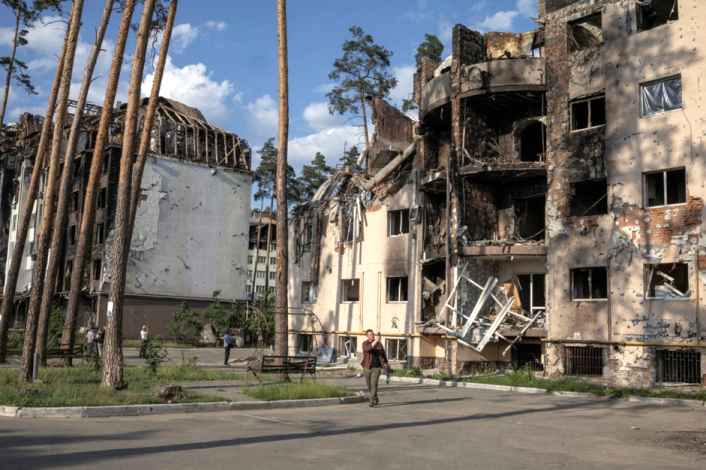Architecture: the second casualty of war. This line from an article I had read years ago stayed with me. Back then, it felt improper to put the loss of property and loss of life under the same term- casualty. But, it took one statement following many pictures of destructed heritage sites, abandoned public spaces and once prosperous now ghost towns to change my perspective.
“Nearly 143 sites of cultural significance destroyed since the beginning of the Russian invasion in February, in Ukraine”
This June 2022 statement from UNESCO was what first made me truly look at Architecture as a War Casualty.
Before this, it was a chance encounter with a stranger that first faltered a rigid perspective. On learning that I am an architect, this person asked me if I could identify Ukraine’s pre-invasion architecture, based on a picture. The building in question was the Kharkiv opera house, damaged in the bombing of Ukraine’s largest square- the Freedom square. As I pointed out the constructivist style of architecture, I realized how two missile strikes destroyed a centre for arts, a community hub, and a square named so post Ukraine’s Independence, all in a matter of seconds. These spaces encompassed hopes, aspirations, pride, safety and collective memories.
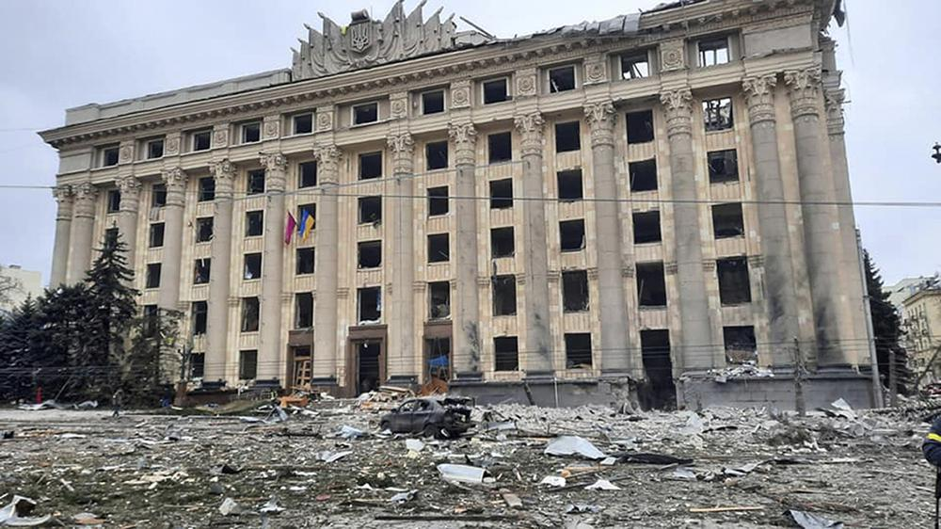
When I started conceptualising this article, in successive fleeting bouts of recollection, my thoughts oscillated between several headlines on the destruction of man and space and the loss of centuries-old Culture. Wars have wiped neighbourhoods off the maps. They have levelled to the ground basic infrastructure and replaced the chaos of crowded public spaces with an apocalyptic silence amongst the rubble. With the destruction of Architecture, wars have heavily impacted every aspect of an individual’s life- home, work, and social, heritage and cultural identities.
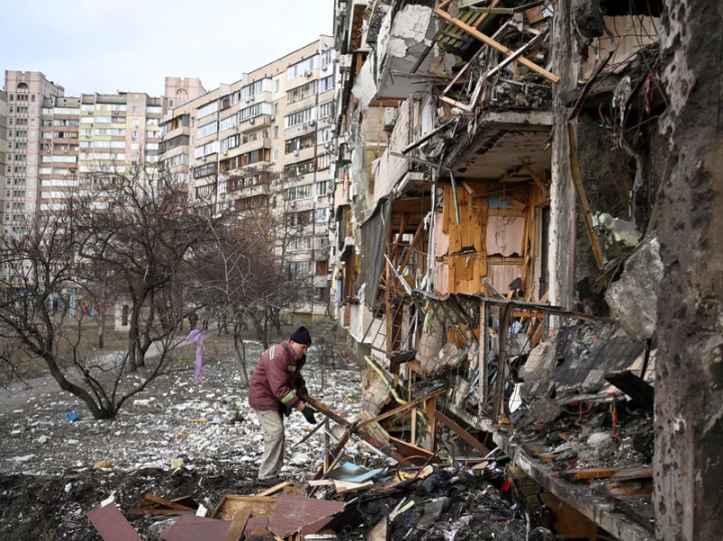
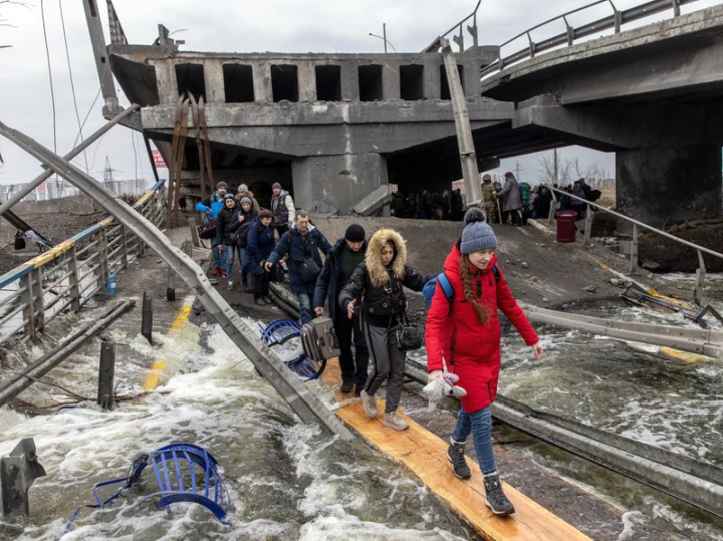
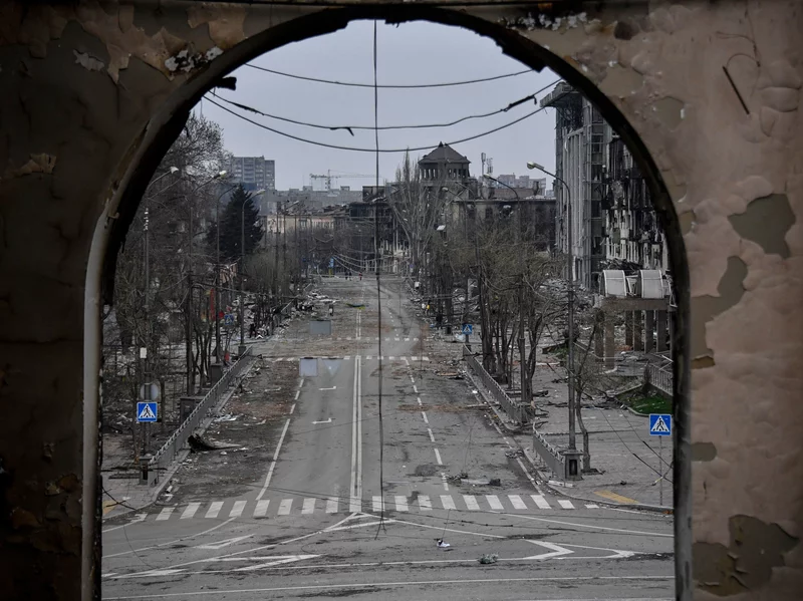
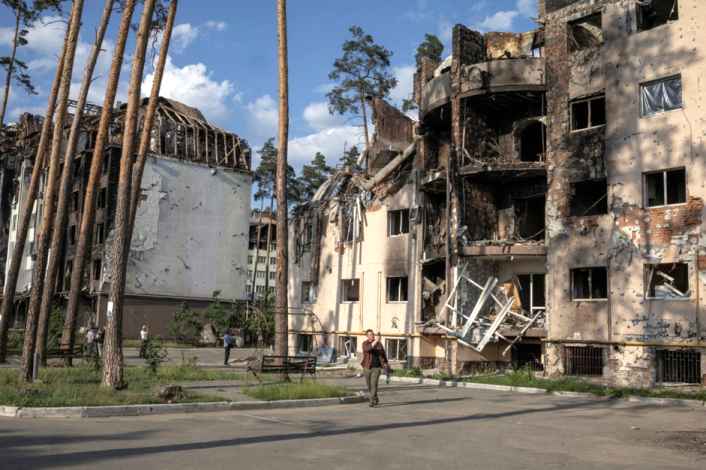
As I continued my research, numbers gradually changed- 143 sites of cultural significance on June 15, 2022, became ‘152’ a week later on June 23, and ‘161’ on July 11. Centuries-old culture and heritage remain targeted in Ukraine.
“It is hard to talk about heritage preservation while people are being killed. But heritage is not just bricks and walls. Heritage is memory.”
Ukrainian architect and historian Ievgeniia Gubkina, 2022
Architecture is a community’s identity and pride. In an address to the World during the initial days of the Russian invasion, Ukraine’s President Zelensky recorded his session in front of a well-known structure- House with Chimeras in the country’s capital, Kyiv. The famous landmark built in the Art Noveau style of architecture announced that the President was indeed in Kyiv and was standing at the forefront, guarding his country.
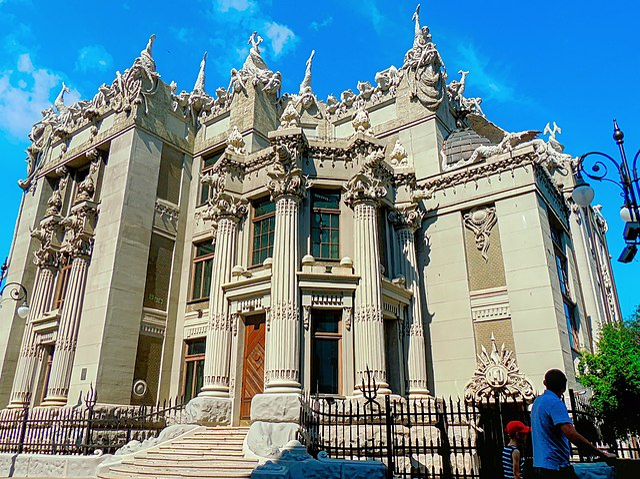
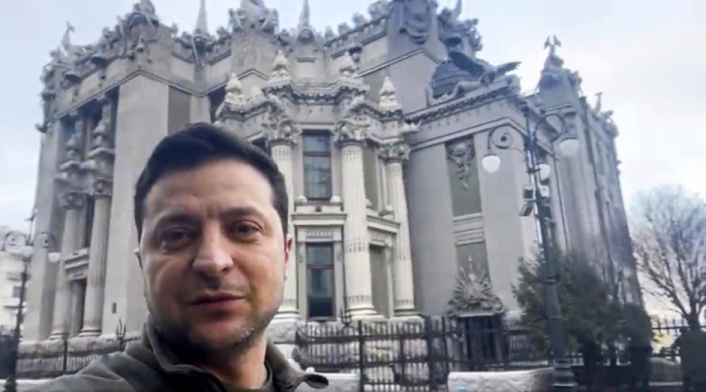
The President, post Russia’s attack on the Freedom Square- Europe’s 8th largest public square, said in his address, “Every square of today, no matter what it’s called, is going to be called Freedom Square, in every city of our country.”
For any community, their culture and heritage are the collective identities that bind them to each other. A desperate need to conserve Heritage in the Ukraine War could be seen in an appeal of the Ukrainian Embassy to the Holy See and the Ukrainian Catholic Major Archeparchy of Kyiv-Galicia to Russia to avoid bombing the over 1000 years complex of The Cathedral of St. Sophia. Located in Kyiv, the Cathedral is probably the most well-known structure in Ukraine.
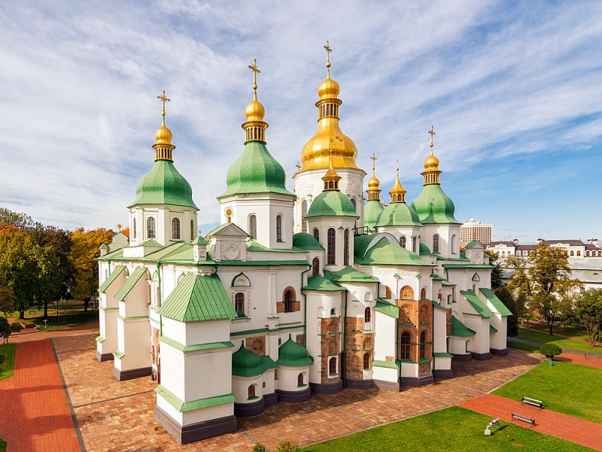
Architecture also became the central part of everything Ukrainians left behind and everything they turned to for safety- homes, institutions, and public spaces people escaped from, to the underground subways they found shelter in- definition of safety and shelter changed. Life shifted underground- In one of his addresses, Ukrainian President Zelensky stated that they were holding “worship services in the basement”.
Today, as Ukraine continues defending its territory, architects, planners and policymakers globally are analysing and putting forth suggestions for rebuilding the country. The country is looking towards challenges that range from providing functional services such as housing and institutions to preserving their Heritage. With the country’s Architecture stepping away from its Pre War identity, it has to rebuild and reconstruct itself to enter a new Post-War era.
In the past, wars brought about a significant change with them in the local Architectural style, providing architectural opportunities. Perhaps the one example that could best delineate this scenario would be the architecture of the Post World War period- Modernist Architecture. What was initiated by the Industrial Revolution became the face of the Post-World War World. The acute shortage of materials and destruction on a large scale led to more inventive design solutions. It is safe to assume that moving forward, Ukraine is now looking at making a new identity, and the country’s Architecture will be the face of this identity.
While the World is coming up with suggestions and views on Ukraine rebuilding itself post-war, the country’s architects are already working towards it- they are designing houses for the displaced. In July 2022, Ukraine would put forward a blueprint plan for rebuilding, primarily focusing on infrastructure and security institutions. Librarians, archivists, historians and architects are coming together to document the destructed cities and cultural sites. Saving Ukrainian Cultural Heritage Online, SUCHO is such an organisation conserving everything the people feel connected to- Art, Music and Architecture. Schools such as Kharkiv School of Architecture are training architects to rebuild Ukraine.
The country also faces the challenge of a changed outlook of its Soviet Heritage. Despite the overpowering influence of American architecture, Ukraine’s architecture has achieved global recognition- especially, the buildings built during the Soviet era. The Derzhprom building on Freedom Square was the largest single building at its completion in 1928 and is a complete example of Constructivism.
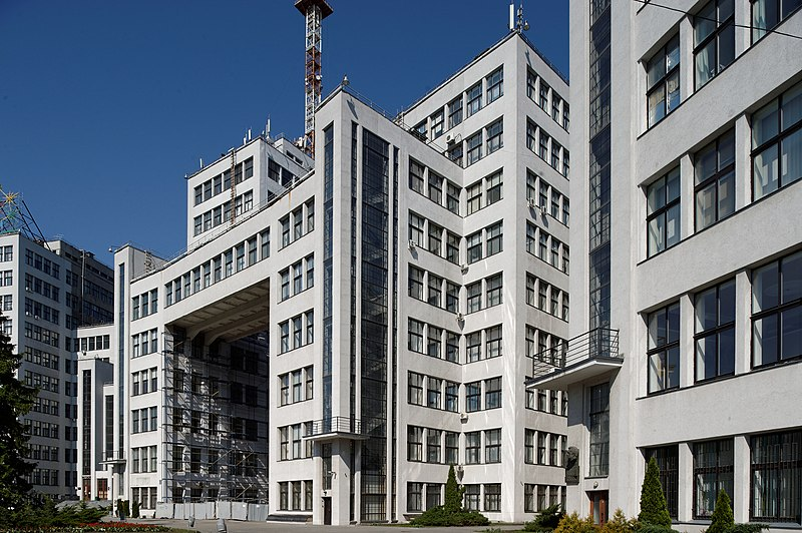
According to the Kharkiv School of Architecture’s co-founder, Oleg Drozdov, Ukrainians today are “more critical of their Soviet Heritage”. Even before the invasion, away from the Soviet identity, architects in recent years had started adopting the Modernism style of Architecture to form a unique identity of Ukrainian architecture. Restructuring the society would not just involve the conception of new but also to re-accustom themselves to what remains of the old.
The process of rebuilding Ukraine would vastly be aiming at two factors- Racing against time to speed fast the rehabilitation process- primarily with basic infrastructure, and not letting rapid development hamper the potential of Ukraine’s architects.
The citizens’ first struggle would be to reattach and re-own places that the war destructed and made inaccessible. Today, we read about places adapting themselves to the situation. Public spaces such as parks, public buildings such as schools, and places of worship have observed a change in their social function- still being used as a community space, albeit for survival. But post-war, these spaces would go back to their original functional use.
If we look at our history, war has not only led to the emergence of new architectural styles but also introduced new structures such as barracks, memorials, and housing for those who served in the war. It has given rise to new, innovative solutions to cater to the overwhelming surge in demand for educational institutions, medical institutions and housing for the internally displaced. Nearly a third of Ukraine’s population’s displaced in what is being referred to as Europe’s largest refugee crisis since World War II. In the past, several architects have come forward with innovative solutions for those fleeing conflict. Ranging from temporary shelters such as reflective and insulated tents to pop-up community spaces and structures built of cardboard- Architecture has constantly evolved to cater to the situation and will continue doing so in response to Ukraine’s fight against the Russian invasion. Entering into a new era, moving forward while holding onto the humility brought on by preserving the memory of war is bound to trigger a radical approach to Architectural innovation and imagination.
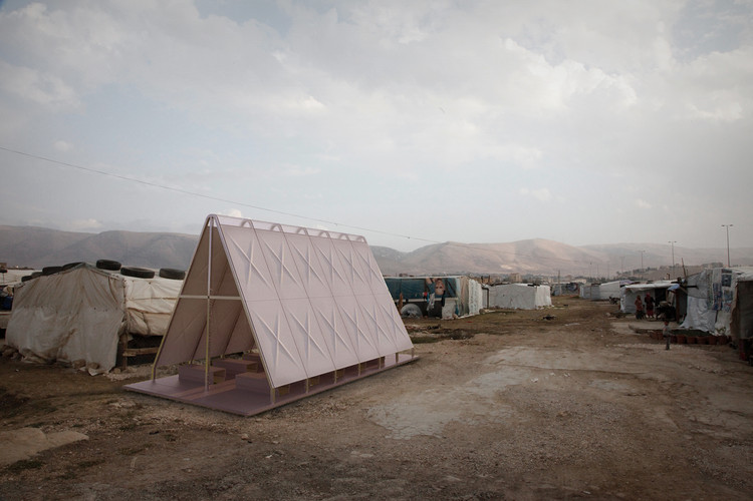

The European Union, which has pledged financial support to Ukraine, looks toward an approach involving its 2020 proposed- ‘The New Bauhaus’ movement, which was introduced for the Continent’s green transformation. Several architects believe that to curb the repercussions of war, the country should immediately begin with the initial phase of rebuilding the cities which have seemingly seen the end of the War. However, regardless of all the speculation and suggestions, how Ukraine rebuilds itself remains a question without a definite answer.
While the World continues studying Ukraine’s situation, many challenges lie ahead of the country. In the struggle of emotionally rebuilding themselves from a deadly war, many would have to restart their lives from scratch- as individuals, as a community. Even as the country works towards conserving its culturally significant sites, the rubble and partial destruction would now be a part of history themselves. The War itself will go in Ukraine’s history. And so would the country’s emergence and the ‘Ukraine’ it builds post-war.

